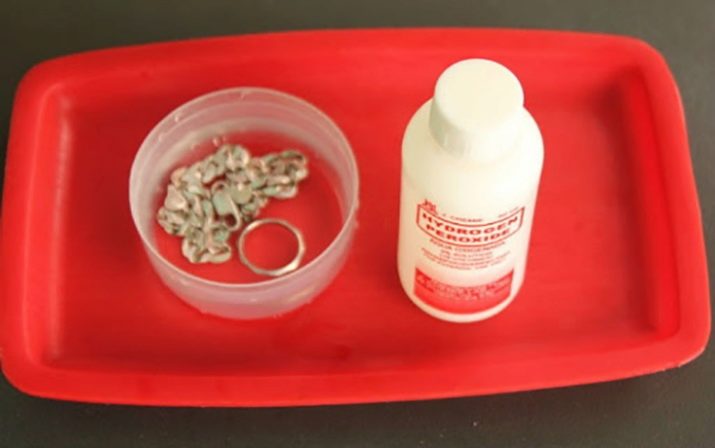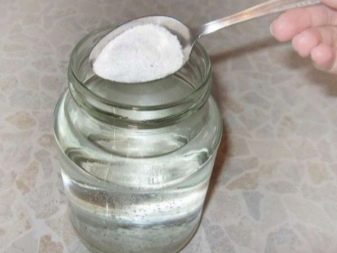Platinum is a noble precious metal. Products from it are very popular. It is important to understand how it stands out among other metals and in what parameters it surpasses them.


How to distinguish from silver?
The cost of silver is much lower compared to platinum, for this reason unscrupulous manufacturers give silver products for expensive noble metal.
An attempt to sell a massive chain at affordable prices indicates the likelihood of fraud.
You can identify platinum and distinguish it from silver metal by several parameters, such as:
- color;
- weight;
- resistance to chemical influences;
- density;
- resistance to heat.

In appearance, these metals are similar, but if you look closely, you can notice the difference in shades. Silver has a gray tint, and platinum is lighter and more shiny.
If there are scales in the house, weigh the metals. When determining the mass of products, the error should be minimal. Compare the weight of silver and platinum jewelry (their sizes should be approximately equal). Platinum is heavier, so the mass difference with a similar silver sample will be significant.
We cannot exclude the possibility that the jewelry is made of an alloy of silver and other heavy metal, for example, rhodium, but it is minimal. Such substances are also quite expensive, they are rarely found in nature, and similar materials are not used in the manufacture of fake products.


Platinum is categorized as hard metals, and silver jewelry changes shape even with little external impact. If the surface of the product is deformed after the force was applied to it, the likelihood that it is not made of platinum is high.
Platinum jewelry is denser than silver. If you place the sample in a container of water and measure the amount of liquid that it displaces, and then divide the mass of the product by the obtained value, the figure should be about 21.45. This density has a pure platinum metal, devoid of impurities.
It does not hurt to try platinum and silver jewelry on the tooth. There will be no imprint on platinum, but it will be on silver. This is due to the higher density of platinum metal.


Another test for determining the difference is carried out using a foul egg. Decorations from different metals are alternately applied to it. Silver will turn black under the influence of hydrogen sulfide, and nothing will happen to platinum.
Refractoriness is characteristic of platinum; it can be safely held over the stove without fear. If contact with the fire is short-lived, she will not even have time to warm up properly. You can’t get burned about such a decoration. Silver warms up quickly, so the risk of getting a burn is high.



Differences from gold and other metals
Gold belongs to the category of soft metals. In contrast, platinum is much stronger and denser, more resistant to wear. And she weighs more. Gold is easier to deform, platinum products are more practical. Platinum is lighter, gold bars and jewelry have a gray or gray-yellow tint.
To give white gold products a characteristic whiteness and shine, additional strength, they are often covered with a rhodium-plated layer of a silver-white hue.
Its properties are as close as possible to the properties of platinum.

Rhodium looks attractive and does not fade, does not change color over time. It is more scratch resistant than soft gold. The only drawback of such a coating is its abrasion, which leads to yellowing of the product. Such spraying is recommended to be updated every few years with a jeweler. Platinum does not require additional processing, and so it has a silver-white tint.
Another difference is the price. Platinum used to be cheaper than silver. Today, a jewelry made of this metal will cost much more than an analogue of gold.


Platinum from other metals, including from palladium, distinguishes pure white gloss. It is characterized by refractoriness and is immune to high temperatures.
If you bring a platinum product to an open fire, nothing will change, the color will remain the same, even strong heating will not occur.

How to determine authenticity at home?
For pure platinum, various alloys are sometimes given out, containing it in a minimal amount, therefore, each buyer should know how to prevent mistakes in choosing a platinum product and recognize a fake. There are a number of methods to determine the authenticity of platinum. If in doubt, it is worthwhile to conduct a test using special formulations.
Check how the sample reacts to iodine. If the color of a drop of a medicinal product after application to the surface remains unchanged (dark), then the sample is high. Moreover, the richer the color, the higher it is.

To verify the authenticity, they use “royal vodka”. Concentrated hydrochloric acid is combined with nitric in a proportion of 3: 1. Such a mixture promotes the dissolution of metals, but this does not apply to platinum. A platinum jewelry dipped in a solution will not change its appearance.
The fake “royal vodka” will dissolve with ease. But the solution must be applied in a cold form, a hot solvent and a platinum product.
Authentication is also performed using liquid ammonia. Contacting with metals, it provokes the blackening of their surface, but this does not happen with platinum.

It is resistant to magnetic effects. If the magnet attracts the product, it means that the amount of precious metal in it is low or completely absent. Most jewelry manufacturers complete their locks, the design of which includes a steel spring. Such a mechanism is in chains and bracelets. If it is present, the magnet attracts only the lock.
At home, you can perform another safe test aimed at establishing the authenticity of the product. Pour water into the metal container with the salt dissolved in it and place the test sample in the solution. Connect a tin can to the minus of the ordinary battery, and the tested product to the plus.
In the case of a fake, a precipitate forms in the solution, causing it to cloud. If the product is really made of precious metal, the solution will not lose its transparency, but will begin to synthesize chlorine. A sharp smell testifies to its appearance.


The above methods do not guarantee a 100% result; it is advisable to use them as an addition to professional advice. To verify the authenticity of the metal, it is better to use special equipment that jewelers have.
For more information on platinum and determining its authenticity, see the next video.



